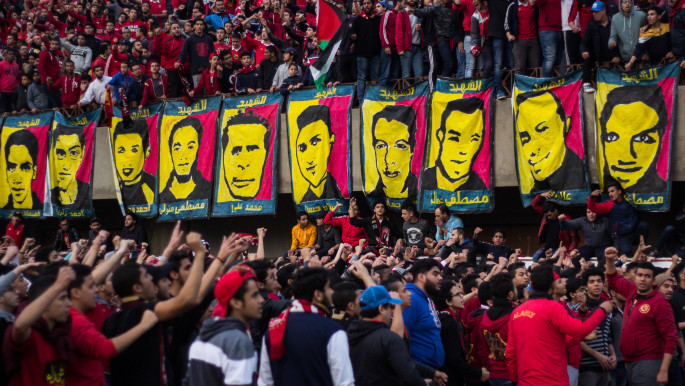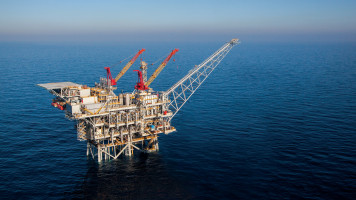
'Never forget': The turbulent world of Egypt's Ultras Ahlawy

On 1 February 2012, rival Egyptian football teams Al Masry and Al Ahly played each other in Port Said on what would become the darkest day in Egypt’s footballing history.
At the end of the game, Al Masry fans flooded the pitch and ran undisturbed towards the Al Ahly supporters' section. The latter tried to reach the exit as fast as possible, but the gates were inexplicably closed and would remain so.
Carrying knives, sticks, and wooden poles, Al Masry supporters brutally attacked Ahly fans. At least 72 people were killed and 1,000 injured in the violence, including dozens crushed to death trying to escape.
"On 1 February 2012, rival Egyptian football teams Al Masry and Al Ahly played each other in Port Said on what would become the darkest day in Egypt's footballing history"
The police stood by and watched the impending tragedy unfold. Some believe the violence was planned, or at least encouraged with the military’s backing, as punishment for the active participation of Al Ahly fans in street demonstrations during the 2011 revolution that ousted Hosni Mubarak.
The greatest tragedy of Egyptian football, which changed the life of Ultras Ahlawy forever, marked its 11th year during the opening match of the Club World Cup held in Morocco on 1 February – and Al Ahly fans made their presence felt.
During the tournament, a banner reading ‘Never Forget’ was hung during all four matches.
President Abdel-Fattah el-Sisi launched a widespread crackdown on dissent following the 2013 coup that ousted Mohamed Morsi, targeting journalists, civil society, Islamists, and hardcore football fans.
In 2015, a Cairo court designated all ultras groups in Egypt as terrorist organisations and they were outlawed.
Dozens of ultras from different clubs have since been detained, with ex-Ahly and national team star Mohamed Aboutrika added to Egypt’s state terrorism list after being accused of links to the Muslim Brotherhood.
As a result of the state crackdown, the Ultras Ahlawy supporters group disbanded in 2018, followed shortly by their rivals, the Ultras White Knights of Zamalek.
“They even convinced some members who had been kicked out from the group to burn a fake banner, which was supposed to be the main one, to claim that Ultras Ahlawy no longer exist,” a former member who wanted to remain anonymous told The New Arab.
|
|
Ultras Ahlawy were born in 2007 from the merger of members from two other groups, the Ahly Lovers Union (ALU) and the Ahly Fans Club (AFC).
ALU originated in the late 1990s from an internet forum dedicated to the club. Many of the members of this group were based abroad. AFC were created in 2004 and were close to the club’s board.
But differing levels of activity and conflicting stances caused discontent among members of both groups.
“That’s why we opted for founding a new group, which should have been independent and really active in supporting the team,” another former Ultras Ahlawy member told The New Arab. “We had a great team, but not great fans. We wanted to compete against other North African fans,” they added.
"President Abdel-Fattah el-Sisi launched a widespread crackdown on dissent following the 2013 coup that ousted Mohamed Morsi, targeting journalists, civil society, Islamists, and hardcore football fans"
In 2006, they started recruiting and Ultras Ahlawy came to life the following year. “At the beginning, we shared the sector with AFC. Then we had disagreements with them and kicked them out.”
Since then, Ultras Ahlawy have become a point of reference on the North African ultras scene and a source of inspiration for many other organised groups. They continue to be so, even though they have had to stop their activities indefinitely.
While Ultras Ahlawy no longer exist as an organised domestic force, they continue to live on during the matches that Al Ahly play outside of Egypt. The FIFA Club World Cup tournament, in particular, provided an opportunity to get their message across to a wider audience and continue the spirit of the hardcore fans group.
But active members who travelled to Morocco refused to speak to the press for obvious reasons. Paranoia and caution are constants in their lives.
“They are still watched and talking to the press might not be safe when they come back to Egypt,” a former member, who chose to focus on his family and start a new life, told TNA.
The Egyptian security apparatus knows that there are still active members of different ultras and maintains a limit of 5,000 fans per team for domestic league matches.
Furthermore, purchasing tickets online for Egyptian league matches is only possible through a platform where it is mandatory to enter your personal data. It goes without saying that these are conditions that a majority of ultras refuse to accept.
|
|
“I think that the government likes the ultras and respects them, but doesn’t like that they are so independent and can’t be used,” one former member said.
Others believe that if the leaders of the Ultras Ahlawy were to accept government-imposed conditions then the terrorism label could be overturned and they could return to the stadiums. But this is unlikely, with many preferring to stay in the shadows and travel to overseas games.
In order not to attract too much attention, members living in Egypt tend to travel individually to the destination country and then meet up with the rest of the group in front of the stadium.
"They are holding onto the dream that something is going to happen and they can come back"
“Actually, there is no planning. It’s all very spontaneous,” both former members interviewed said. “The group has no definition. Everyone is enjoying following the team abroad, where nobody will touch you. They just gather and start singing.”
Some members wear the group scarf and t-shirts or carry banners because they feel they are safe abroad and miss the group.
“They are not dead nor alive,” one former member told TNA. “The parts of their bodies are separated, but they are still functioning. The main parts aren’t dead. They are holding onto the dream that something is going to happen and they can come back.”
Alex Čizmić is a freelance journalist based between Italy and Bosnia-Herzegovina.
Follow him on Twitter: @AlexCizmic




